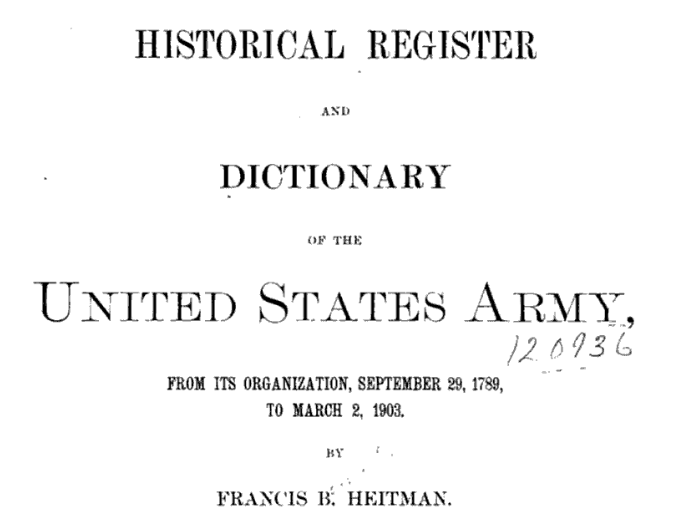Streamer Spelling Error
I only gained a deeper understanding of the United States Army major battles and the campaign streamers that they represent when I had the privilege to edit and update the book U.S. Army Campaign Streamers: Colors of Courage Since 1775. As a Senior Fellow for the non-profit Association of the United States Army and volunteering to serve with the Institute for Land Warfare, one of our key roles is “to inform and educate” about our nation’s Army. The bullpen of senior fellows is full of great Army thinkers, and our team is anchored by Gen. Frederick J. Kroesen. If you have read an ARMY magazine in the last decade you have probably seen his common-sense views on leadership that are as spot-on today as when he first experienced them in his own era. I am proud to be among these great leaders.

Battle of Stones River in Tennessee
Fighting against the Union Army in the winter of in 1862, rebel Gen. Braxton Bragg suffered a loss in Kentucky and withdrew his forces to the mid-Tennessee Valley. The Union Army at that time was being resupplied around Nashville when Maj. Gen. William Rosecrans was ordered to move his forces against Bragg and the two Army’s clashed around Stones River near Murfreesboro, TN. At first, it appeared the rebels may have been driving the Union forces back, but Rosecrans held his ground to what best could be considered a tactical draw. After reinforcement arrived Bragg eventually retreated in January 1863 earning the north a strategic victory (as summarized here by American Battlefield Trust).
My project was to update and edit their 2009 monograph about Army Streamers and I spent a great deal of time looking at the different approved U.S. Army campaign streamers. It was during a final edit and a comprehensive spell check did I discover an apparent error in the Civil War-era streamers related to the Stones River battle. But to understand the error one must first have to understand the trials and tribulations the Army had gone through to adequately acknowledge battles and campaigns, and its long-going effort to highlight battle credit to encourage unit esprit and pride. These are a part of the fundamental building blocks that help define why soldiers fight and defend their nation, and is intertwined in our core fabric. This is a core purpose of the book.
Without giving away too much and hoping you will read more in the newly updated book which will be re-issued at the annual AUSA Winter Symposium in Huntsville AL, Mar 26-28, 2019, the Army struggled since the early days of how to display a unit’s lineage, campaigns, and commendations. As the book states that the “story of the campaign streamers is intricate and has involved many of the Army’s prominent leaders for more than 140 years,” and the story is still being written. Between inscribing battle names on regimental colors to silver bands attached to the staffs, the Army not only struggled with how to display campaign credit but to also define what was to be considered a campaign worthy of credit.
Oops.

The first published names of battles in which units performed meritoriously were listed in the Official 1866 Army Register and it appropriately listed the site of the Stones River Battle as “Murfreesboro’, Tenn.” However, reconstruction era voices in and out of the Army often complained of the accuracy of the list. Between boards, reviews, and campaign credit research attempts, to some the Army never adequately addressed campaign credit and a full accounting of Army battles was not finalized. It was former War Department employee Francis B. Heitman who published an unofficial Historical Register and Dictionary of the United States Army in 1903 that made a serious attempt to list all of the battles of the Army from 1789 to 1902, and for many righted the wrongs of past omissions. It was in this journal that the error was perpetuated from, and that was the misspelling of the nearby town of the Stones River battle as “Murfreesborough.” On 30 Oct. 1919, the War Department published the first list of official Army campaigns containing seventy-six campaigns and in June 1920 the War Department changed the regulations directing that each regimental color bear streamers in the colors of the campaign medal ribbon for each war in which the regiment had fought, which now included World War I battles and going back to the Revolution. However, with thanks to Heitman, the damage was done and from this point forward the Stones River Battle was recognized in records and on Army streamers incorrectly as Murfreesborough and does still today.
Time moves slowly, and so does correcting Army records. On November 26, 2018, I notified the Director of The Institute of Heraldry, U.S. Army in Building 1466 at Fort Belvoir, VA of the error, with a copy furnished to the Center of Military History at nearby Fort McNair, in the District of Columbia. Ft Belvoir is some 664 miles from Murfreesboro. I noted to the Director in my message that the regulation they are the proponent of AR 840-10 is in error. If you note on Page 39, item #43 under the Civil War campaigns, the regulation lists the aforementioned campaign streamer as “Murfreesborough 1862-1863.” According to Henry Gannett’s 1905 publication The Origin of Certain Place Names in the United States, Geological Survey Bulletin, no. 258 (2nd ed.). Washington, D.C. Murfreesboro was initially named Cannonsburgh. Murfreesboro has had that spelling of its name since changed in 1811. Hopefully, the message has got to the right people and the great minds who look at these things are able to sort it all out before the good people of Tennessee take notice too much.
Meanwhile, somebody should notify the TACOM Heraldry Team and the streamer suppliers and vendors. I see a big order coming their way.
/topsarge
CSM Dan Elder, USA, Retired
@dandotelder

You must be logged in to post a comment.